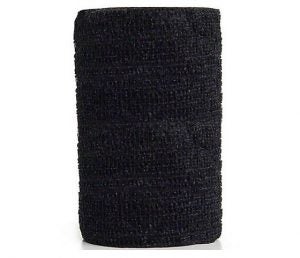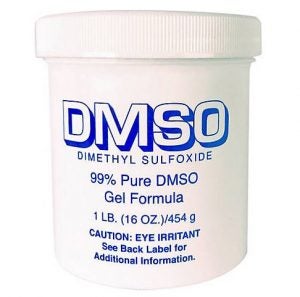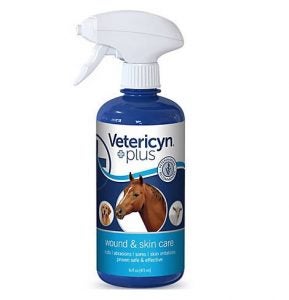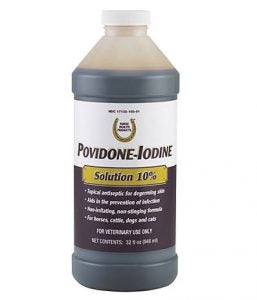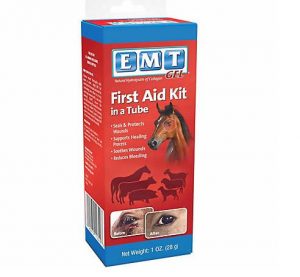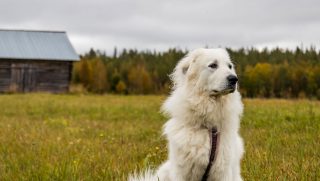Horses are going to get cuts and scrapes and other injuries — it’s just the nature of who they are. While massive trauma requires a professional veterinarian, of course, the little nicks and smaller types of soreness are the kinds of things that you can probably take care of on your own. That means keeping a good equine first aid items on hand at all times — in the barn, your mud room, the horse trailer — anywhere that you’d have quick and easy access to them for treatment.
I find myself going to my local Tractor Supply or Southern States every so often to restock or update expired products, and it’s a good idea that you do that, too. In fact, I tend to time that trip to when I change my clocks (just like it reminds us to change the batteries in our smoke detectors, it also serves as a reminder to make sure our equine first aid items in order). Of course, lots of the basics can easily be purchased online, too!
While you can purchase a fully built-out equine first-aid kit from stores, we prefer to put it together ourselves. There are a lot of things that many horse enthusiasts and Extension specialists will recommend that you have available, but we wanted to zero in on some of the major ones for this list.
So what equine first aid items do you have handy? Here’s what we have around:
3M Vet Bandaging Tape
This has to be the most obvious one on this list, right? This is immensely useful for dealing with a variety of wounds and trying to immobilize limbs, but many folks find other non-medical uses for it as well, like holding stirrup leathers and Blevins buckles together or wrapping stirrups for traction. Plus, when riding, it can serve as a wound prevention on legs. It sticks to itself without the use of pins, so it’s easy to use, and I have a wrap in what seems like every color of rainbow (well, technically, it’s only currently available in eight colors, and black and white aren’t rainbow-y colors). It conforms itself over a variety of contours, and can be repositioned if needed. Medically-speaking, this is what 3M touts its wraps for:
- Immobilizing limbs for splints and casts
- Providing support for sprains and strains
- Supporting post-cast removal
- Maintaining even compression over time
DMSO (dimethyl sulfoxide) gel
This is a product that, admittedly, isn’t accepted by everyone and has had some rocky associations, so please do your research on whether you feel it is right for your farm animals. We have DMSO on our property because it has been shown to help with things like orthopedic inflammation and neurological injury. We prefer the gel form, though it’s also available as a liquid. Its ability to draw fluid out of treated areas means that it can be used topically to reduce swelling and inflammation associated with strained muscles and soft tissue injuries (though the full breadth of its uses far exceed inflammation-related injuries). DMSO is a nonsteroidal anti-inflammatory drug that makes an excellent solvent and penetrant through organic and some inorganic material.
Vetericyn Plus Wound & Skin Care
The last thing you want is for an open wound to get infected, which is exactly why we have Vetericyn Plus. This stuff can be used for cleansing, irrigating, debriding, and moisturizing wounds. It is known to be safe to use around the mouth, nose, ears, and eyes. Some of the highlights:
- Non-toxic, safe if licked or ingested
- No Alcohol, steroids or antibiotics
- Non-irritating & promotes healthy tissue
- Safe for all animal skin types at all life stages
Farnam Horse Health Povidone-Iodine Solution
This topical antiseptic kills a variety of bacteria, fungi, protozoa, yeast, and viruses — perfect for all manner of open wounds. It is also non-irritating and non-staining and will not blister. We have this in our tack room, horse trailer, and pickup truck.
PetAg EMT Gel
This is the newest product in our first-aid arsenal, and while it’s good on a wide number of animals, including horses, we got it for one of our goats that got injured. And we were happy with the results! According to the manufacturer, the gel provides nutritive collagen protein to the wound site to enhance the natural healing process. It reduces bleeding by forming a plug to encourage natural clotting, while forming a semi-occlusive barrier that protects the wound and provides a moist environment which encourages healing. It’s best for:
- Superficial wounds (cuts and abrasions)
- Burns
- Flesh tears
- Dermal ulcers/”hot spots”
- Injured foot pads
- Surgical wounds
- Other general dermatologic conditions
What should be in a first-aid kit for horses?
In addition to a variety of topical and cleansing solutions for wounds and inflammation, you should also have bandages, gauze, and wraps available at all times. These things are generally easy to transport to a show or trail ride, and you’ll be thankful to have them at the ready when the time comes. Plus, while a lead line and twitch may not officially be a part of the first-aid kit because they will be used on a more regular basis, having those items around is a good idea, too.
How much is a horse first-aid kit?
If you were to purchase a well-stocked premade horse first-aid kit, you can expect to pay anywhere from about $40 for this kit to closer to $90 for this kit. Of course, it all depends on what you decide to put into the kit that determines how much the final price will be, but we’ve found that finding the materials yourself can save you about 25 percent of the cost, though you’d have to decide if that dollar amount is worth the time to pick out items individually or add them one at a time to an online cart. After all, time is money. But we do prefer to customize things, so having the freedom to pick the items and brands ourselves is a win.
We are committed to finding, researching, and recommending the best products. We earn commissions from purchases you make using the retail links in our product reviews. Learn more about how this works.
